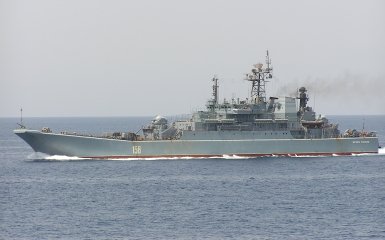With the arrival of a new commander of the Navy, Russia has changed its tactics in the Black and Azov seas. Instead of surface ships, the invaders are betting on submarines.
Points of attention
- Russia has changed tactics in the Black and Azov seas from submarines instead of surface ships.
- The Armed Forces hit the last Russian ferry in the Sea of Azov, known as "Slavyanin", which was important for the military logistics of the occupiers.
- Russian warships have left the waters of the Sea of Azov due to damage to a railway ferry.
The Navy records changes in Russia's tactics at sea
They don't have such a large selection. We see certain changes with the arrival of a new commander, who was represented by Shoigu, now the former head of the Ministry of Defense of the Russian Federation. Yes, they have been looking for this tactic for some time, said Dmytro Pletenchuk, the spokesman of the Naval Forces of Ukraine.
The spokesman noted that now the tactics of the Russians in the Black Sea and the Sea of Azov are reduced to the presence of only submarines, which are more difficult to find and destroy.
It was also a tactic of increasing the use of the aviation component, the tactic of shelling from the territory of Crimea and the use of the Iskander operational-tactical complex. They are looking for a way to counteract, Pletenchuk said.
The spokesman added that there is one location left in the Azov-Black Sea region for the stay of Russian ships — the port of Novorossiysk. Ships leave this base rarely and only for short-term operations.
What is known about the withdrawal of the Black Sea Fleet from the Sea of Azov by the Russian army
Pletenchuk previously noted that the presence of Russian warships is currently not being recorded in the Sea of Azov.
Previously, they could be based in Azov or periodically visit, for example, Temryuk, or periodically stay in the Taganrog Bay, but for now they decided to leave the water area. They decided to leave the waters of the Sea of Azov, caused, of course, by the first step, the damage to the railway ferry. They took a map, took a compass — drew a radius and realized that it was probably not very safe to stay there. That is why it is the only reason, and it is the only language that our enemy understands, the language of power, Pletenchuk emphasized.
The spokesman of the Armed Forces Navy added that the Armed Forces hit the last Russian ferry in the Sea of Azov.
That is, it was used for international transportation until the two previous railway ferries were damaged. It was used in the interests of military logistics of the Russian Federation and was actually the only such element that connected the mainland railway with the Crimean railway, Pletenchuk explains.
According to him, three-quarters of the enemy's military logistics were placed on ferry transportation, since the occupiers stopped using the Crimean Bridge for this purpose.
Therefore, according to Pletenchuk, "Slavyanin" as an element of logistics was very important for the occupiers.



